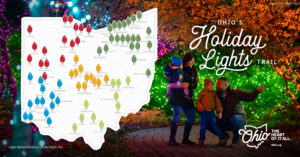The barn swallows of Southeastern Ohio

 Okay, while it doesn’t have the same ring to it as the “Swallows of Capistrano,” every spring I look forward to the return of the Barn Swallows to southeastern Ohio.
Okay, while it doesn’t have the same ring to it as the “Swallows of Capistrano,” every spring I look forward to the return of the Barn Swallows to southeastern Ohio.
The Barn Swallow (Hirundo rustica) is a familiar spring and summer visitor to not just our area but to almost the entire United States, and much of Canada. In our hemisphere it is a great migrator, spending the winters in Central America or South America, and the summers in North America.
They usually start to arrive in our parts sometime in April, and by October most of them are gone. Migration has already peaked here, but now the parents are busy with young.
The Barn Swallow is a beautiful, small bird, with an almost metallic dark-blue upper body, with a creamy “buff” colored breast and orange or rusty colored throat and forehead. They have tiny black bills and display swept wings and deeply forked, v-shaped tails when in flight.
And talk about masterful flyers!
Usually when I am mowing or working with the tractor in the summertime I am surrounded by a horde of swallows swooping and diving all around me, feasting on the insects that are getting kicked up by the tractor. I sometimes refer to the old International tractor as the “Swallow Feeder.”
I am always amazed at how fast and graceful they are, how low they can fly over the top of the ground, or inches above water, and then turn on a dime. They fly so close to me on the tractor that I used to occasionally duck, but despite all of the apparent close calls I have never had one actually collide with me.
Smart cattlemen welcome Barn Swallows, which are beneficial birds that consume large numbers of flying insects that would affect crops or harass their cows. These cattlemen tend to install new sheds storage buildings or barns that are Swallow friendly. Sometimes they leave bits of old barn structures around so that the Barn Swallow can roost there.
In an odd sort of “friendly fire,” Barn Swallows will eat the dragonflies that also eat mosquitoes. At my house the Barn Swallows make up the “day shift” insect eaters, with bats taking the night shift. The dragonflies take over the day shift starting around September.
Barn Swallows are very vocal on the wing; when they are swarming about their twittering or chattering is almost constant. You won’t see them milling about or walking around much on the ground, but they do seem to love to sit out on the driveway or the concrete pad in front of the barn, and on utility lines. I used to have my treadmill in front of the upstairs garage window and oftentimes they would be lined up on the powerline at my eye level, apparently watching as I sweated away on the dreadmill.
Did you know that Barn Swallows are the most common species of swallow in the world? They can be found almost everywhere except in the highest mountains or driest deserts. You can’t attract them with feeders, but if you have suitable nesting sites and open fields or water around, they are almost certain to find you.
They differ from the also-familiar Tree Swallows in that Tree Swallows are non-communal cavity nesters. Although the Tree Swallow has a dark, iridescent blue back, its breast and front are pure white. They also differ from the Cliff Swallow (of San Juan Capistrano fame) which has a bright white spot on its forehead.
Did you also know that Barn Swallows, in the days before European settlement, used to make their nests in caves and cliff cavities, but now almost exclusively rely on human-built structures for nesting? The name Barn Swallow is well-deserved; while many bird and animal species would do just fine without us, the barn swallows definitely benefit from our presence.
At our house the Barn Swallows used to nest in the old barn and milking parlor, now they nest under the overhang or underneath the old garage. Their nests are made with mud mixed with grass and other materials. Peak breeding occurs from May to August, and the typical clutch of 4 to 6 eggs hatches after 13-15 days of incubation. The young birds fledge about 20 days after hatching.
Sometimes Barn Swallows will get help feeding their nestlings from older siblings from previous clutches, or even from unrelated juveniles, but male swallows have to protect their nests from single male Barn Swallows who may kill the nestlings to break up the breeding pair. Barn Swallows will mob intruders to their nest sites, including cats, snakes, other birds and people.
So enjoy watching these talented aerobatics while they are here, because in a few short months they will be taking their air show back south.
Jim Freeman is the wildlife specialist for the Meigs Soil and Water Conservation District. He can be contacted weekdays at 740-992-4282 or at [email protected]








